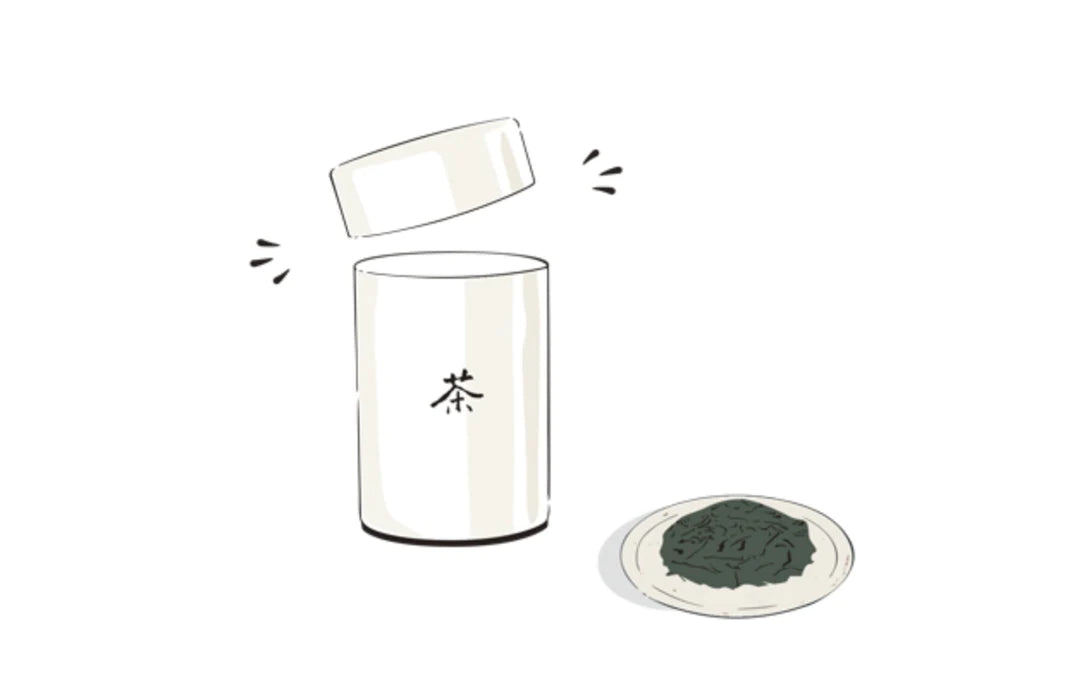Basically, the higher the price, the stronger the sweetness and deliciousness of the tea and the more refined the bitterness and astringency. Also the aroma will be better and the leaves will have a brighter shade of dark green.
What Is Matcha? What Is Tencha?
Matcha is made of tea called tencha. To produce tencha, we cover the tea plants to block sunlight while the sprouts are growing and then grind the tea leaves finely with a tea millstone. Blocking sunlight prevents sweetening and deliciousness components from turning into bitterness and astringency. As a result, tencha takes on a deep and mellow sweet flavor with a good taste and a rich and profound character.
Tencha is the base material for matcha. To produce tencha, we cover the tea plants to block sunlight while the sprouts are growing, steam the tea leaves and dry them without kneading. After removing the stems and leaf veins, we grind only the soft parts of the flesh with a tea millstone to produce highly fine-grained matcha.
Quality Differences
sweetness

Deep, strong and profound aroma with lingering aftertaste. Complex and elegant with richness.
Superficial, light and somewhat shallow. Does not spread or remain in the mouth. The sweetening component is hard to distinguish unless one tries to sense it consciously.
umami

Thick. The velvet like softness adds to it's smoothness as the tea matures. Complex although harmonised.
The tea's bitterness overpowers it's deliciousness (Umami). Is mostly thin, shallow and simple and lacks in richness.
bitter and astringent

The tea contains almost no harshness or astringency as that of sour persimmons. The bitterness is elegant, mellow and pleasant like that of the seven spring herbs.
The aroma is harsh and sharp with a tongue-stinging solid hardness.
aroma

Elegant. Delicate and complex at the same time. Profound, thick and deep with yumminess.
Simple and rough. Lacks in deepness and does not spread. Overpowered by the roasted aroma called hika.
colour

Deep and emerald green with the vividness of tender green.
Green is somewhat burnt and bears redness and yellowness. Monotonous and shallow without gloss. Colour does not last after pouring hot water.
How to Make a Good Bowl of Tea
When brewing green tea, use hot water at lower temperatures to extract sweetness. The higher the temperature of the hot water, the more bitterness and astringency will be released. There are two ways of whisking matcha: Usucha (thin tea) and koicha (thick tea). Each method presents different charms of matcha. Because matcha is vulnerable to static electricity and other stimulations and is prone to clumping, use a matcha sieve or a tea strainer at first. If they are not available, tenderly loosen the matcha with a dry tea whisk. For koicha, we recommend using products of 30 g/2,100 yen or above, because it requires a larger amount of tea and needs to be thick.

Usucha (thin tea)

Koicha (thick tea)

Cold Matcha

how to store
Here are some tips to keep your tea fresh and enjoy it tastily.







